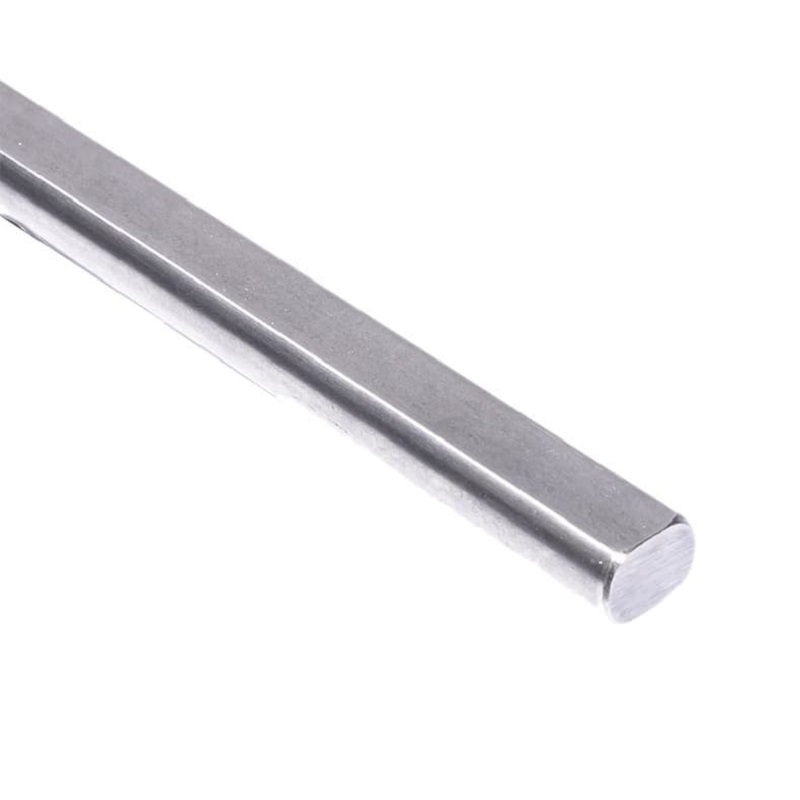Carbon Steel Shaft
Carbon Steel Shaft
Blog Article
Carbon Steel Shaft is a rotating or transmission component made of carbon steel Material, which is widely used in mechanical systems to transmit torque, rotational power or support loads. Its shape is usually long cylindrical and can be precisely processed according to the application scenario, including turning, milling, heat treatment, grinding, plating and other processes. Carbon steel shafts are widely used in industrial manufacturing due to their good mechanical properties and cost-effectiveness.

Uses:
Mechanical transmission shaft: used to transmit power and motion in equipment such as motors, transmissions, reducers, etc.
Automotive industry: used as important components such as drive shafts, camshafts, crankshafts, etc.
Industrial equipment: used in rotating equipment such as pump shafts, fan shafts, compressor shafts, etc.
Agricultural machinery: In equipment such as harvesters and tractors, carbon steel shafts are responsible for driving functional components such as blades and transmission wheels.
Elevators and conveying systems: used as main shafts to carry lifting or conveying mechanisms.
Tool equipment: used as main shafts in equipment such as lathes, milling machines, and drilling machines.
Material:
Low carbon steel (such as AISI 1018, 1020): good weldability, strong plasticity, suitable for low-load shaft parts.
Medium carbon steel (such as AISI 1045): moderate strength and hardness, one of the most widely used shaft steels.
High carbon steel (such as AISI 1080, 1095): high hardness, excellent wear resistance, suitable for high-strength, high-load environments.
Alloy carbon steel (such as 40Cr, 45# steel): has better comprehensive mechanical properties after quenching and tempering.
Heat-treated steel: can improve hardness and wear resistance through quenching, tempering, etc., and extend the service life of the shaft.
Features:
High strength and hardness: especially medium and high carbon steel, has good torsional and compressive resistance after heat treatment.
Good processability: can be cut, welded, heat treated, ground and other mechanical processing.
Moderate price: compared with stainless steel and titanium alloy, carbon steel has low cost and good economy.
Strong adjustability: Its hardness, toughness and wear resistance can be changed through quenching and tempering treatment to adapt to different working conditions.
Suitable for high-load applications: It can withstand large mechanical stress and is an ideal choice for heavy-duty mechanical systems.
Can be mass-produced: The manufacturing process is mature and suitable for large-scale manufacturing and standardized production.
Adjustable service life: The shaft life is extended by lubrication and anti-corrosion treatment.
Advantages:
High cost performance: Carbon steel materials have a wide source, high processing efficiency, low overall cost, and are suitable for large-scale industrial production.
Strong adaptability: It can be used in a variety of mechanical systems, including environments with different requirements such as high speed, heavy load, and continuous operation.
Good mechanical properties: It has excellent bending, torsion and tensile resistance, and is the first choice for high-load transmission systems.
Various surface treatments can be performed: such as chrome plating, spraying, carburizing, and blackening treatment to improve corrosion resistance and wear resistance.
The performance is greatly improved after heat treatment: After quenching and tempering treatment, the strength and toughness of medium and high carbon steel are even better.
Suitable for all kinds of standard and non-standard designs: Various sizes and structures can be customized according to drawings to meet personalized design needs.
Easy to maintain and replace: simple structure, easy to process, install and maintain, and easy to maintain the system.
FAQ:
Are carbon steel shafts easy to rust? How to protect?
Carbon steel shafts are indeed easy to rust in humid or corrosive environments. To prevent rust, surface treatment methods such as electrogalvanizing, electronickel plating, blackening, phosphating, oiling or painting are usually used. For shafts exposed to the outdoors or liquids for a long time, you can also choose to coat them with anti-rust coatings, or regularly add anti-rust lubricants to extend their service life.
Can carbon steel shafts withstand high temperature environments?
Carbon steel shafts can withstand operating temperatures of 200~300℃ under normal working conditions, and their mechanical properties will drop significantly above this temperature. If you need to operate in a high temperature environment, you can choose medium and high carbon steel after quenching and tempering, or use alloy steel instead, such as 42CrMo. For extreme high temperature conditions, it is recommended to use heat-resistant steel or stainless steel.
Can carbon steel shafts be used in food or Medical equipment?
Generally not recommended. Carbon steel is easy to rust and difficult to keep clean, so it is not suitable for direct contact with food or human body. Stainless steel shafts (such as 304, 316L) are more commonly used in the food and Medical Industries, which have good corrosion resistance and hygienic properties. Carbon steel shafts can also be considered in some auxiliary equipment if they are used non-contact and coated or sealed with specific coatings.
How much load can a carbon steel shaft bear?
The load-bearing capacity of a carbon steel shaft depends on its diameter, length, heat treatment state and specific material. For example, the tensile strength of a 45# steel shaft after quenching and tempering can reach 600~800MPa, and the bending strength is also high. When designing an engineering project, the selection and strength calculation should be based on specific working conditions (such as torque, load, and speed) to ensure safe operation.
How high can the precision of a customized carbon steel shaft be?
Depending on the requirements, the processing accuracy can range from ±0.05mm for ordinary turning to ±0.002mm for precision grinding or even higher. Shaft parts often need to ensure concentricity, runout, straightness and other indicators, especially high-speed rotating parts, which need to be precisely processed with key components such as bearings. The processing technology includes rough processing, heat treatment, fine turning, grinding and other processes to ensure that the final product meets the design requirements.